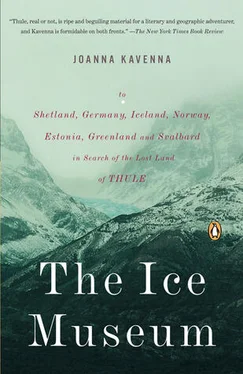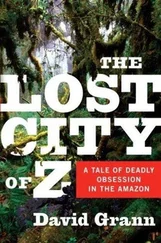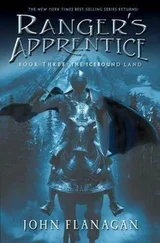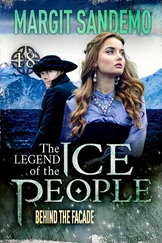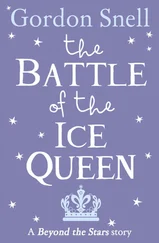And when the children had been scooped up and taken away, I walked down the steps to the cabins. The solitary entrance gave me a bout of the shakes, which might have been caused by the atmospheric sub-zero temperature of the museum, or perhaps the clear vision of the past, the props without the people, arrayed before me. There was a dusty old piano ahead, in a communal room, with seats and tables arranged beside it. And all around were the cabins of the long-dead crew, with names engraved above their doors. Names once spoken by awed admirers, now part of polar history: Hassel, Sverdrup, Wisting, Juell, Nordahl. Some of them went with Nansen when he tried to reach the North Pole; some of them went with Roald Amundsen when he sailed Fram south. I imagined the creaking of the boards under their feet, as they moved heavily through the boat—stocky, weather-hardened men, born into Arctic darkness, bred in thick snow and long winters.
Cabin One, on the starboard side, was Nansen’s. As I peered through the glass door, I could see a cramped cell, barely large enough for a bunk and a chest of drawers. The walls were anachronistically decorated with commemorative plates (‘The North Pole Expedition 1893-6’) and tacky souvenir portraits of Nansen and his crew. A few pieces of woollen clothing had been strewn on the sofa; two guns leaned against the wall. There was a thermometer, a map, and a large bronze bust of Nansen perched on the bunk. A microscope stood on the chest of drawers. Other than that, little remained of the diverse obsessions of the former occupant.
Nansen was a biologist by career, but he dabbled in many of the Arctic arts, and developed a personal theory of oceanography. As early as autumn 1884, at the age of twenty-three, Nansen read an article in the Norwegian newspaper Morgenblad which referred to various pieces of wreckage found on the south-west coast of Greenland. The wreckage was thought to have come from the Jeannette , a ship that set out in 1879 under the command of George Washington De Long of the American Navy. De Long thought that if he ran the ship up the Bering Strait he would profit from a warm current along the east coast of Wrangel Land, which might help him towards the North Pole. Whalers had recorded that their ships generally drifted northwards whenever they were set in the ice; De Long set off with this in mind. His ship was trapped in the ice at 71°35’ N and 175°6’ E. The Jeannette drifted in the ice from Wrangel Land to the New Siberian Islands until it was crushed in June 1881, north of the New Siberian Islands, at 77°15’ N and 154°59’ E.
A few years later, wreckage from the ship had been found off the southern coast of Greenland at Julianehaab; a battered collection of objects including a pair of oilskin breeches belonging to one of the crew and a list of provisions signed by De Long. There were many at the time who thought it was quite impossible that these pieces of explorers’ debris should have ended up in Greenland; doubts were raised about the genuineness of the items, accusations of forgery were levelled at the locals. Yet there were others who thought the pieces must have been taken on an ice floe across the Arctic Ocean. Nansen was firmly in this second camp, and, moreover, he thought this ice floe must have passed across the North Pole. Nansen jumped to an optimistic conclusion—if wreckage could drift from the New Siberian Islands to Greenland, then so could a boat.
In February 1890, Nansen stood in front of the Christiania Geographical Society, and proposed that he and his audience might solve the problem of Arctic transport by paying strict attention ‘to the actually existent forces of nature and seeking to work with them and not against them.’ De Long had been right, even though his ship had been smashed by the ice.
‘The distance from the New Siberian Islands to the eightieth degree of latitude on the coast of Greenland,’ Nansen began, ‘is 1,360 miles, and the distance from the last-named place to Julianehaab was 1,540 miles, which together makes a distance of 2,900 miles. The floe traversed this distance in 1,100 days.’
He started with numbers, seeking to stress the scientific process, the careful mathematical calculations he had applied to the question.
‘It may be assumed then,’ Nansen continued, ‘that the ice floe travelled at a rate of 2.6 miles per 24 hours. Knowing as we do the speed of the current along the east coast of Greenland, the speed of the wreckage drifting along this coast can be calculated with a certain amount of precision—it would have taken 400 days at least to traverse this distance. So 700 days remain, as the longest time the drifting articles can have taken to travel from the New Siberian Islands to the eightieth degree of latitude. Supposing that the pieces of wreckage on their ice floe or floes went the shortest and most direct route, via the Pole, they would have averaged a speed of 2 miles every 24 hours. But if the floe had taken a less direct route, say, it went, for example, south of Franz Josef Land, and south of Spitsbergen, then the floes must have drifted at a faster rate.’
Spitsbergen—now called Svalbard—is an archipelago of islands, lying in the Barents Sea. If the current flowed south of Spitsbergen, then Nansen would never reach the Pole. It was vitally important that Nansen could establish that those ice floes had drifted north of Spitsbergen. Nansen had a further suggestion. The wreckage was not the only proof. There were the throwing sticks. The Inuit had found throwing sticks on the western coast of Greenland, which must have come from the Alaskan coast. And, added Nansen, there were the trees. The trees clinched the argument. Dead trees that drifted from Norway and Siberia to Greenland. Anomalous trees, Picea obovata , Nansen added, flaunting his credentials, the Siberian species of alder and poplar, were frequently found on beaches in Greenland, and used to make boats. There were no such trees in Greenland. It was impossible, Nansen thought, that this driftwood floated south of Franz Josef Land and Spitsbergen. Siberian driftwood was regularly found north of Spitsbergen. All this wood, drifting around in the polar ice, proved categorically that the implacable whiteness of the polar ice was being dragged in turn by its own imperative—the force of a sea current. A current flows from the Siberian Arctic Sea to the east coast of Greenland, Nansen concluded. It flows north of Spitsbergen. It flows, he sincerely hoped, via the North Pole.
It is here that the polished flanks of Fram take their part in the story, returned to their original function, not to stand memorialized in a boathouse, surrounded by an assortment of indignant stuffed animals, but to push away the ice, to rise above its clutching tightness. Nansen proposed to build a ship, as small and strong as possible, just big enough to carry coal supplies and provisions for twelve men for five years. The boat would need sloping rounded sides, strong enough to withstand the violent force of the ice. When the ice came to crush the boat, drawing it down under the mounting pressure of frozen water, Fram ’s curved bathtub of a body would push the ice down, and the ship would rise upwards. Nansen intended to sail up through the Bering Strait and along the north coast of Siberia towards the New Siberian Islands as early in the summer as possible. Then he would head into the ice and moor among the floes. He would let the ice take the ship, and, trapped in the ice, he would drift towards the North Pole.
While formerly the ice had prohibited, now it would facilitate. Nansen’s idea was to work with, not against, nature. In defiance of the humanist raging of the likes of John Stuart Mill, the rallying cries against the insensible force and random cruelty of nature, Nansen saw nature as a perfect system. Instead of making significance and order of chaos and emptiness, Nansen accepted the internal rules of the space around the Pole. Imagining the Pole as a sort of compelling whirlpool, drawing everything towards it, Nansen intended to sit in his boat, and wait to arrive. It was exploration through compulsory inertia. Nansen would not set himself apart from the limitless expanse before him, he would seek to become inherent to it—the sea and sky would envelop a small, tub-shaped boat.
Читать дальше
